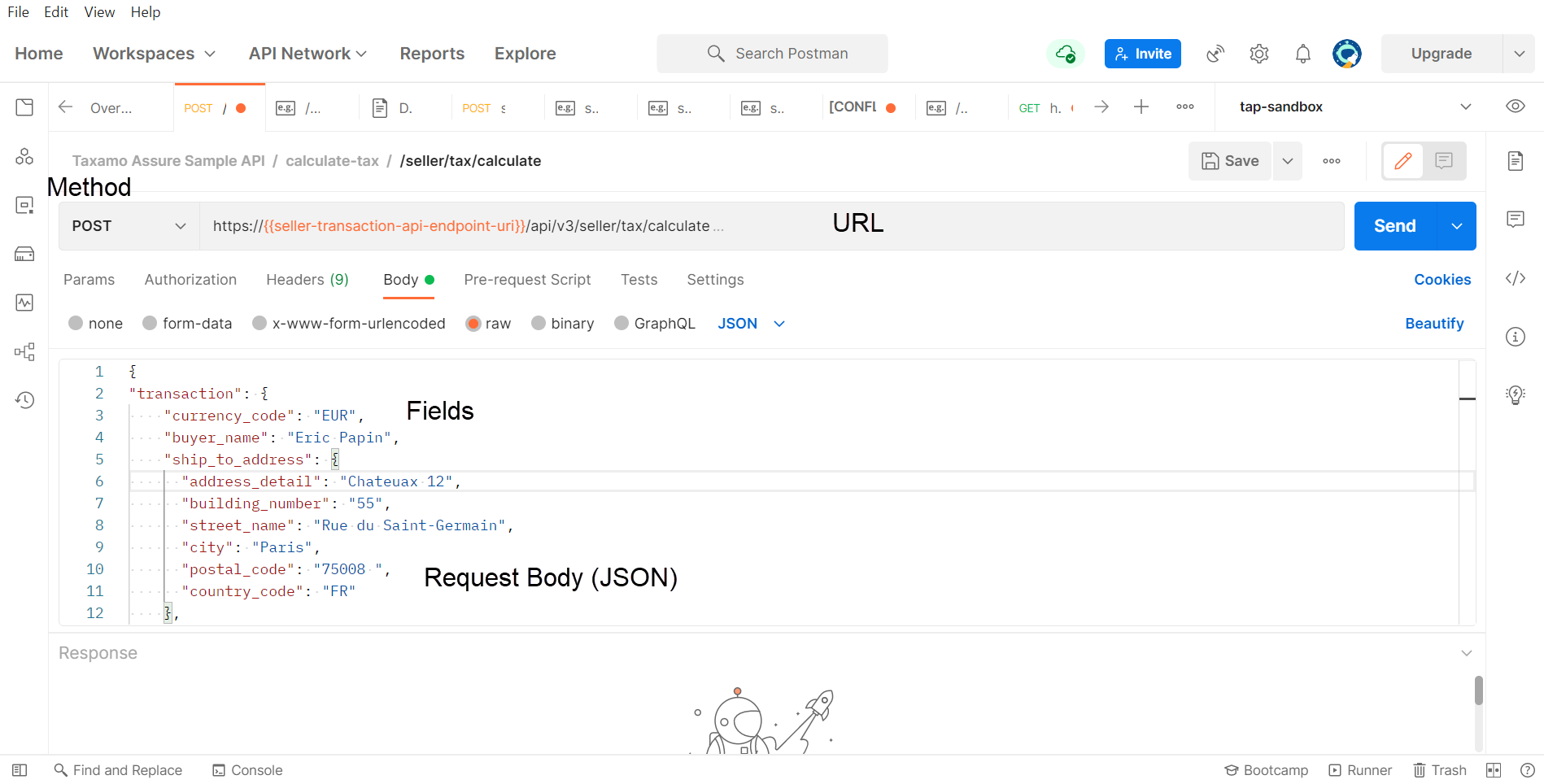Getting Started with the API
Get an overview of the basics of the API.
If you want, you can directly integrate with the service, using the API. It is available for users who want to integrate the service into their checkout process while maintaining complete control over the sequence of calls and the payment methods used.
If you do use the Checkout Form, you may still use the API to retrieve data.
Before you can use the API, you must contact support to have it enabled for your account.
To send requests to the API, you need an access token. See Retrieving Access Tokens.
Requests and Fields
You can use the requests listed here to integrate the service's functions with your checkout processes.
You use a combination of an endpoint in the API and a method to model the functions that you use to integrate the service and your checkout process. For example, you might use the Calculate tax (POST +https://services.taxamo.com/api/v2/tax/calculate) request to calculate tax for a good. See Requests.
The following screenshot shows an example of a request in Postman:

It is made up of a method and a URL. These call an endpoint in the API. The information that is sent is contained in the fields in the request's body. This is in the JSON format.
Specific information is sent to the API and returned by the API as values for fields. These fields are grouped together in JSON objects that are attached to the requests and responses. See Fields.
Mapping the Service to your Checkout Processes
You use requests to map the features of your service to pages on your webstore that represent steps in the transaction lifecycle.
The following table lists the requests that are provided in the API and where they can be mapped to your checkout processes or used elsewhere:
| Request | Use |
|---|---|
| Calculate tax | Use this request to provide tax information without creating a transaction record. For example, use it to provide tax information on a product page. |
| Validate VAT number | Use this request to validate tax ID numbers for business-to-business transactions. For example, use this request to validate a VAT number on a B2B transaction. |
| Store transaction | Use this request to provide more detailed tax information and to store a transaction. The stored transaction can then be adjusted, cancelled or confirmed. |
| Confirm transaction | Use this request to confirm a transaction. You can configure exactly when to suit your needs. It might be after the payment is finalized, for example. |
| Create a refund | Use this request to facilitate refunds. |
| Get transaction refunds | Use this request to retrieve the refunds that are associated with the specified transaction. |
| Cancel refund | Use this request to cancel a refund. |
| Cancel refund by subnumber | Use this request to cancel a refund that is specified by the refund subnumber. |
| Cancel transaction | Use this request to cancel transactions. |
| Browse transactions | Use this request to browse transaction data. |
| Retrieve transaction | Use this request to retrieve the transaction record for a specified Transaction Key. |
| Retrieve full transaction | Use this request to retrieve the full record that is associated with the specified Transaction Key. |
| Get event data | Use this request to retrieve data for the specified Event ID. |
Updated 10 months ago
